The Roosevelts, Earle Dickson, Fearless Women, Baseball and Uncomfortable Shoes: 12 More Cool Facts from Johnson & Johnson History
It’s hard to believe that December is here! In celebration of the 12th month of the year and the colder weather it brings, here are 12 cool things from Johnson & Johnson history.
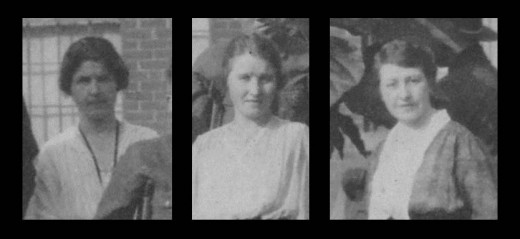
1. Ken Burns’ latest documentary, Laurel Club to attend a national meeting of women employee clubs. They attended a special reception with President Theodore Roosevelt at the White House. Johnson & Johnson’s first female scientist, Edith von K---, was among the Johnson & Johnson delegates, as was Elizabeth P----, who was depicted in one of the Company’s stained glass windows.
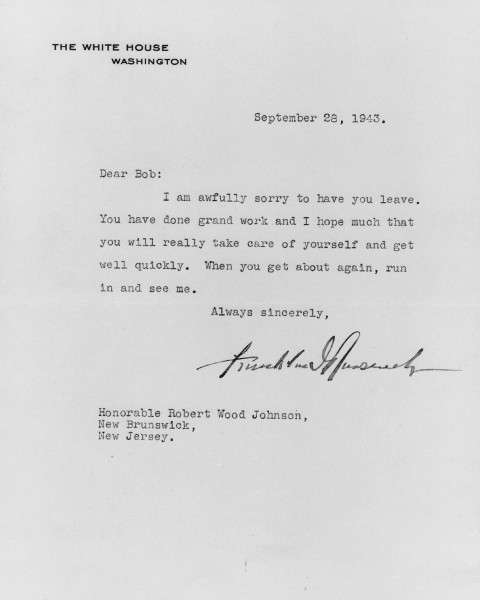
2. Several decades later, when Franklin Delano Roosevelt won the presidential election, Robert Wood Johnson wrote him a letter detailing his ideas for helping to get the United States out of the Great Depression. That helped put Robert Wood Johnson on FDR’s radar, and during World War II, Franklin Delano Roosevelt appointed Johnson as head of the Smaller War Plants Corporation in Washington, D.C. – which is how he earned the title of General. FDR also played a part in the invention of duct tape, since Vesta Stoudt, the woman who had the idea for duct tape, sent Roosevelt a letter when no one else would listen to her idea, and FDR set the wheels in motion to make it happen.
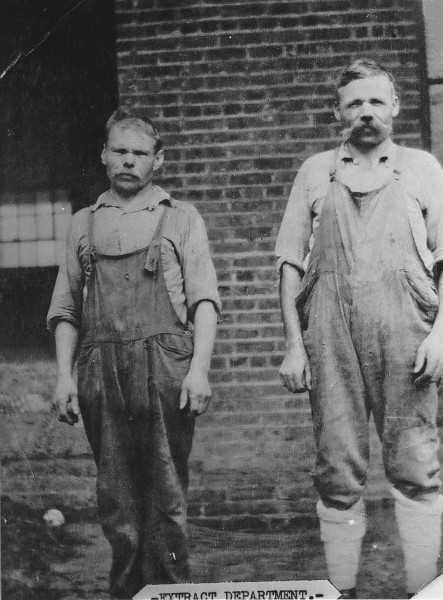
3. In the early 1900s, before the days of air conditioning, damp and rainy weather in New Brunswick, New Jersey shut down the Company’s mustard plaster department, because the humidity interfered with the manufacturing process.
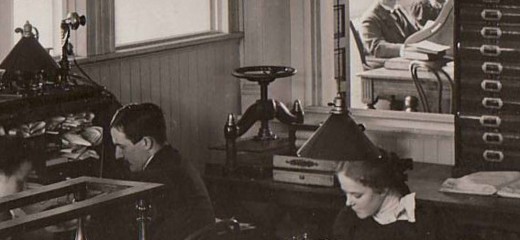
4. In 1908, Johnson & Johnson had 64 Bell Telephones throughout its manufacturing buildings connected to the Company’s central exchange, to facilitate instant communication between the departments. The “ ’phones,” as they were referred to in the June, 1908 RED CROSS® Messenger (because, in 1908, the abbreviation for the word “telephone” was still new), all had long distance capabilities as well.
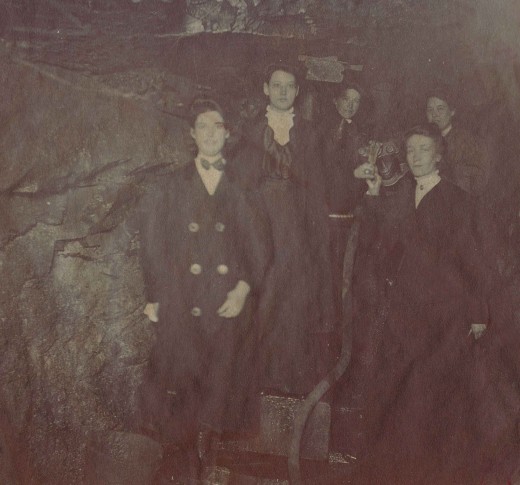
5. How impressive are women employees throughout Johnson & Johnson history? Not only did some of them meet with President Theodore Roosevelt in 1908, they were fearless enough to pose for a 1909 photo in the Company’s under-construction water tunnel!
6. By the way, that Johnson & Johnson water tunnel to the Raritan River was eight feet wide and 275 feet long. It drew water from the Raritan to power the Company’s new state-of-the-art electricity-generating Power House – which today is our Museum building.
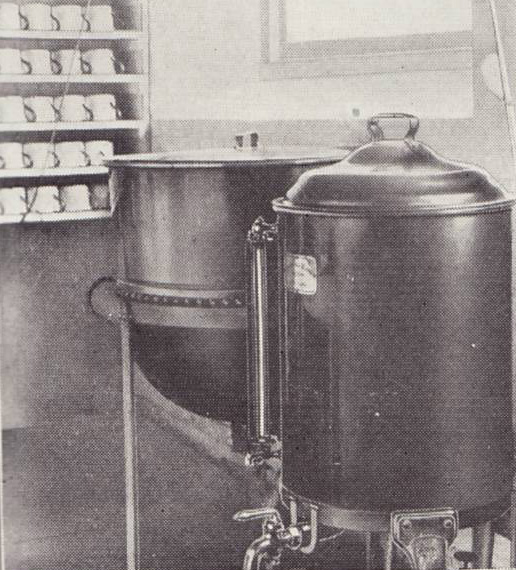
7. On August 23, 1909, Johnson & Johnson began its practice of serving free hot meals to its manufacturing night shift workers. The Company hired a French chef who prepared hearty soups and coffee for employees on the night shift. Although other businesses charged their employees for similar services, Johnson & Johnson assumed the cost for the meals at no charge to employees. There was a different soup each night and, according to the New Brunswick Times, fish soup was a particular favorite.
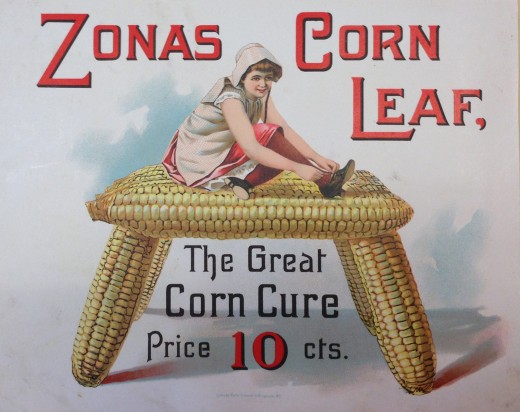
8. Who here has ever suffered with uncomfortable shoes for the sake of fashion? We think of that as a very modern phenomenon, but people have been doing that for at least 128 years: corn plasters were among the first Johnson & Johnson products in 1886.
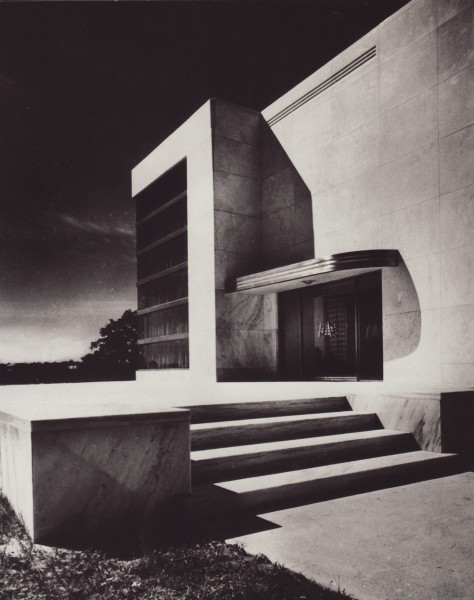
9. Built in the 1940s, the former Ethicon building on Route 1 in North Brunswick, New Jersey, was one of the company’s most beautiful buildings. Part of General Robert Wood Johnson’s “Factories Can Be Beautiful” campaign, the building was faced with white marble and had distinctive imported blue glass windows, complemented by apple trees on its expansive lawn. But here’s something you didn’t know: the building was the idea of Earle Dickson, the inventor of BAND-AID® Brand Adhesive Bandages! At that time, Earle was the vice president of the Company’s Hospital Division. Here’s the story direct from Robert Wood Johnson: “Earle Dickson, our Vice President in Charge of the Hospital Division, told the Directors that the value of the suture department was greatly reduced by its housing. He felt that when doctors, nurses and hospital authorities came to visit us, they should see the suture laboratories in a fine looking factory. In fact, he thought it should be the showpiece of all our New Jersey plants.” [Robert Johnson Talks it Over, Johnson & Johnson, New Brunswick, New Jersey, 1949, p. 51]
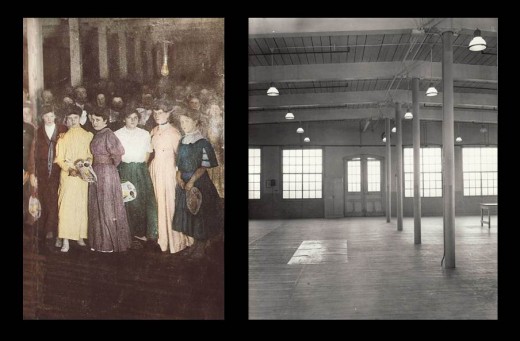
10. One cool early custom at Johnson & Johnson was celebrating the company’s growth by holding a dance for employees. When Johnson & Johnson completed a new building, before the manufacturing equipment was loaded in, the company held an employee dance in the finished but empty building to celebrate, complete with live music and food. Johnson & Johnson did that in 1908 with the opening of the Cotton Mill addition and again in 1912 with the opening of the new storehouse buildings on Nielson Street in New Brunswick.
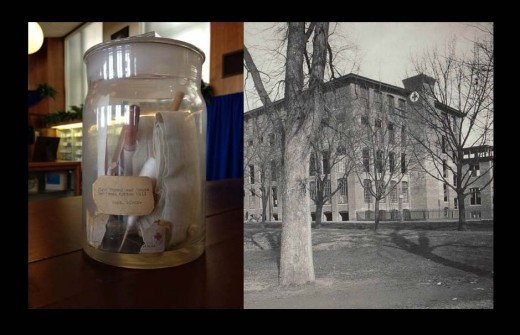
11. Who doesn’t love a time capsule? They provide fascinating windows to a particular moment in time. Here’s a time capsule in the Johnson & Johnson Museum, which preserves the first thread and gauze produced by the new Cotton Mill in 1901.
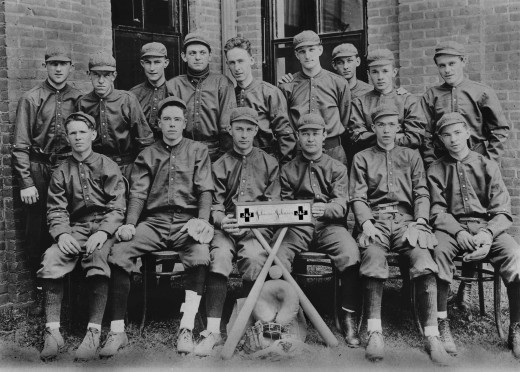
12. Many people look forward to the excitement of watching sports, whether it’s cheering their children’s games, or taking in a game by major or minor league professional sports teams. Over a century ago, you could also take in a baseball game from the New Brunswick Factory League, an amateur baseball league in which Johnson & Johnson employees fielded teams. The New Brunswick Home News devoted pages to covering these games and listing upcoming games. During the summer of 1913, the Johnson & Johnson baseball team battled the Michelin team for the league championship. An August 12, 1913 article in the New Brunswick Daily Home News titled “Immense Crowd Will See Michelin and J. & J. Teams Battle for Lead Saturday,” contained the kind of in-depth analysis of the strengths and weaknesses of the teams and their members that you might see about the Yankees or Mets today. The article noted that the J&J team was getting back its ace center fielder, Jimmy A---, who was expected to give his team the edge in the contest.

I retired from ETHICON, INC in1991 after forty-one happy and productive years that began in August, 1951. I started as a wage employee in the Carding Mill where I worked until drafted into the U.S. Army.
The point of this note is that J&J, by choice and by law, held my job for me so that when I was honorably discharged I returned to a job that provided security and good pay.
I transferred to ETHICON in 1953 and grew to salaried positions that helped me raise my family, purchase a home and grow enough wealth for security as we aged.
God bless Johnson & Johnson.
Peter J. Bruno
After 8 years in the Navy, I still had 2 years of college to finish. Working part time in Personnel Products and with the help of the GI Bill I was able to finish 4 years at Rutgers. I started with Ethicon in 1954 in a newly acquired needle business [ OK Products] which moved to the new Ethicon building in Somerville a couple years later. Wisdom learned from some of the best management people I have ever met helped me advance in the Manufacturing Division until my retirement in 1984.